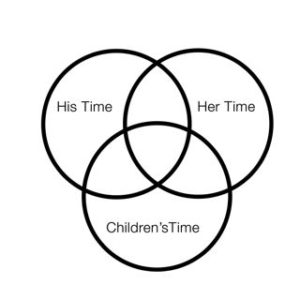 People are innately attracted to faces, especially eyes. The human face is associated with our identity; we are recognized more through our eyes than through any other facial feature. ”Because the eyes offer such rich social information, adults and infants alike show a natural attraction to the whole face,” write contributors to the APA handbook of nonverbal communication (Washington, DC: American Psychological Association, 2016, pp. 335-362). Those who have trouble processing or dealing with social information, such as people with autism, schizophrenia, or social anxiety, tend to avoid eye contact; job seekers are told that good eye contact will make a positive impression.
People are innately attracted to faces, especially eyes. The human face is associated with our identity; we are recognized more through our eyes than through any other facial feature. ”Because the eyes offer such rich social information, adults and infants alike show a natural attraction to the whole face,” write contributors to the APA handbook of nonverbal communication (Washington, DC: American Psychological Association, 2016, pp. 335-362). Those who have trouble processing or dealing with social information, such as people with autism, schizophrenia, or social anxiety, tend to avoid eye contact; job seekers are told that good eye contact will make a positive impression.
When a relationship is new, lovers can spend hours gazing into each other’s eyes over dinner or while lying in bed, enjoying all the nuances of thought, feeling, and passion that can be communicated through facial expression. Young parents watch their children intently, searching their faces to read emotional reactions to sad or exciting events.
The Importance of Eye Contact
But at some point, we stop making eye contact. The romantic relationship matures, distractions (kids, work, medical problems, financial troubles) come in; kids attend to their devices, ignoring parents; parents chauffer their kids while talking on their phones; we eat dinner in front of the TV or our tablets, looking down every time a notification pops up. Whole days can go by without really seeing our partner’s or our children’s faces. In fact, in a previous post on non-sexual touch, I admit to a time when our twins were young, we were both working a lot, and I failed to notice that my husband had shaved his mustache three days before! That was a wake-up call for me.
In couples’ therapy, I gather a lot of information about how my clients communicate by watching their non-verbal interactions. Let’s take Amy and Paul as an example. If Amy and Paul never look at each other, or if Amy looks at Paul but Paul doesn’t return the gaze—his eyes darting around the room instead—I learn something of their connection. Paul has trouble making eye contact with me as well, which also tells me something.
They are coming to therapy because Amy feels that Paul is distant and disengaged. The two seldom interact, whether after work or on weekends. On a typical evening, Paul will come home and turn on the sports channel. Amy will call out from the other room with a question. Distracted, Paul doesn’t acknowledge her. Amy feels neglected, Paul feels he can never please her, and divorce looms. It is important to make eye contact to know that your partner is really listening. Trying to communicate from different rooms will lead to miscommunication and misunderstanding.
This scenario is very common in relationships. The partner calling for attention feels innocent of blame, saying “He never listens, he never responds.” When I gently point out that she’s trying to get his attention when he’s otherwise preoccupied, she explains that he must have heard her and is just ignoring her.
Maybe, after going on for years, this is has become the case. But often the simpler reason is that Paul is watching the game and he literally doesn’t hear. Or he half hears, but the question never gets into his long-term memory.
As is often the case with couples by the time they get to counseling, their dynamic has become entrenched after many years of hurt feelings on both sides. Each blames the other, Amy criticizing Paul for his lack of engagement, and Paul keeping all his feelings to himself. This apparent sulking serves to infuriate Amy more, and she in turn harps on him with progressive intensity. Walls go up and prevent the vulnerability that is needed for true intimacy. Neither Amy nor Paul realize what they are doing to prevent connection.
Look at me when I’m talking to you!
When someone makes eye contact with you, they’re signaling that you’re the object of their attention. There are cultural differences regarding gaze and respect, but in general, we look at those who are socially relevant to us. An averted gaze, in contrast, signals disinterest, shyness, or evasion (although research is mixed about whether lying causes less eye contact). That’s why parents demand “Look at me when I’m talking to you!” or someone suspicious of another might say “Look me in the eye and say that.” It is astonishing how often couples, and kids and parents, try to communicate without ever looking at each other.
But getting back to Amy and Paul, it was important for Paul to understand how dismissed Amy felt when he didn’t answer her or make eye contact with her. Of course, it was also important for Amy to have Paul’s attention before speaking to him. By taking the time to really look at each other, Amy and Paul began to feel closer. Each felt they were being heard.
Getting the focus where it belongs
If your family or romantic connection feels cold and distant, consider the role that gaze may play in preventing closeness. Here are some tips for getting the focus where it belongs.
- Ban screens of any type (TV, computer, phone, or game) and reading at the dinner table so you can all converse face to face.
- Make a point of turning to look at someone when they speak.
- If someone isn’t meeting your gaze, don’t assume they don’t care. They may be preoccupied with work stress. Ask if there is a good time to talk and make a point of coming together a bit later.
- Kids can be big distractions. If your kids continually interrupt your conversations, let them know that they need to respect adult time.
- Make sure you have your partner’s attention when talking to them. Don’t try to talk from different rooms.
- Turning toward your partner builds intimacy.







